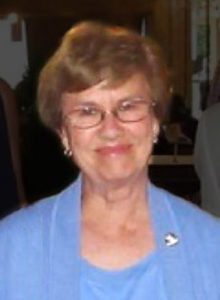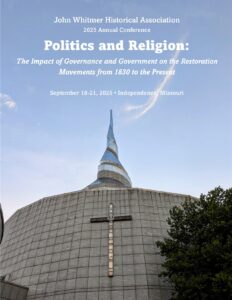 June Newsletter, 2018
June Newsletter, 2018
There has been a lot of talk in the news lately about “the other.” The Other is anyone who is not us. Right now a few policy-makers in the federal administration insist that the frightened folks coming to our southern border are The Other. They are not us; sometimes they are not human; certainly they are not our kind, according to these esteemed lawmakers and administrators.
Think of all The Other: the menstruating girls and women in Nepal; the Roma in Italy; the Syrian refugees in Europe; the Macedonians in Greece; the Rohingya in Myanmar.
Since this essay is for a history association, specifically the history association addressing the story of my own faith community back to 1830, I have been giving thought to our relationship with The Other. We were birthed in an atmosphere of The Other, i.e., the other churches are not us. We are the one true church. We are not like all the others. At one time we were not The Mormons—The Other for whom we had a unique antipathy.
What goes around comes around. In setting our Restoration population apart from The Other, we eventually became The Other. We became The Other in Kirtland, in Jackson County, in Nauvoo. Some can flee; some cannot. Some of the Restoration folks went to Salt Lake City; some went to Texas; some went to Beaver Island in the middle of the very cold Lake Michigan (seriously?); some went to Wisconsin; some went to Minnesota.
Many assimilated, losing their sense of The Other, either for the others or for themselves, but they gained a community. Which was preferable, to maintain their identity as The Other, or to lose their identity and gain a community?
There were a few who did not run away, who for a while mingled with their communities without losing their identity, and who then met up again under their new leader to reorganize and to reassume the strength in their identity.
My research for this September’s Presidential Address has involved reading so many documents both by and about my father. He was a man who very seldom spoke of The Other. (Exceptions were those he called Clever Devils, such as Joe McCarthy, who turned truth on its head and reality upside down.) Although he believed that we were the one true church of Christ on earth, his behavior did not involve setting us apart from the world. He joined the Independence Ministerial Alliance when others thought that was anathema. He welcomed the Baptist congregation and their school children into the Stone Church when their building burned and they needed temporary quarters. He called at least one to the priesthood when he thought to include him in the fellowship rather than to deny him.
So, this is both a contemplation of the role of The Other in our church history and a preview of things to come in September. I’m looking forward to seeing you all.
— Sherry Morain, President


